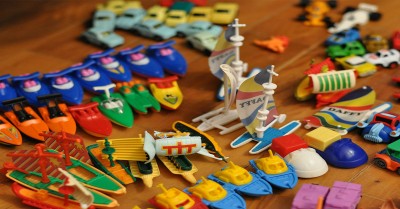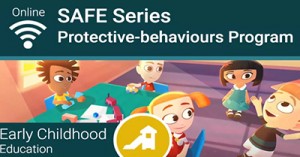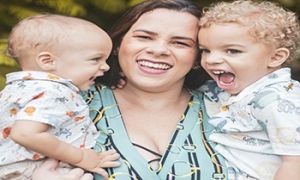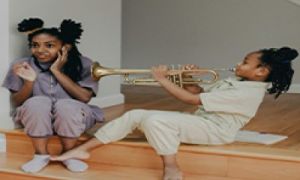On April 22 is Earth Day. This year's campaign is to End Plastic Pollution. As Educators, we spend our days setting up experiences for children to be engaged in by using a variety of resources and materials including the use of plastic.
Whats wrong with Plastic Toys?
Plastic toys/materials are inexpensive and vibrantly coloured. And while they pose the same risks as any other plastic item, these cheap playthings often have shorter life spans than high-quality toys and are pretty much impossible to recycle.
One of the things that separate plastic toys from other plastic objects is that they’re essentially destined for the landfill because they’re typically composed of other materials too, such as metals. The recyclable components can’t be separated out, and become prohibitive for recycling centres.
DEHP In Children's Plastic Items
DEHP is a chemical identified by the unique Chemical Abstract Service (CAS) Number 117-81-7. It is also known as:
- diethylhexyl phthalate
- di(2-ethylhexyl)phthalate and bis(2-ethylhexyl) phthalate
DEHP is a commonly used plasticiser that is used to make plastics such as polyvinyl chloride (PVC) soft and flexible.
The health effects of the chemicals used in the manufacturing of plastic toys are not fully known, DEHP which is used to soften toys has been linked to a number of health issues, including birth defects, cancer and diabetes, And since children often put toys in their mouths, they’re at an increased risk.
Only products or components that are made from soft flexible plastic or foamed plastic will potentially contain DEHP.
Ban On Plastic Products
From March 2010, the Australian Competition and Consumer Commision (ACCC), has placed an interim ban on certain children's plastic products that contain or have a component that contains, more than 1 percent by weight diethylhexyl phthalate (DEHP), are intended for use by children up to and including 36 months of age and can readily be sucked and/or chewed.
These include:
- bath toys
- bats and balls such as imitation, miniature or novelty versions of sporting goods
- dolls, cars, trains, dress ups and blocks PVC squeeze toys such as plastic ducks
- plastic figures
- inflatable toys and balls other than those for the specific purpose of assisting a supervised child to float or swim in water
- infant activity centres and infant gyms
- musical instruments
- developmental and educational toys for infants
- soft books/bath books
- toys or accessories intended to hang from, or attach to, larger toys and childcare articles.
Childcare articles made from plastic or with a plastic component for children up to and including 36 months of age can readily suck and/or chew. These items are expressly included in the ban:
- dummies
- pacifiers
- teething rings
- teething rails
- rattles
- bibs
- gum soothers
- comforting objects
Eating vessels and utensils made from plastic or with a plastic component that is intended for feeding infants up to and including 36 months of age. These items are expressly included in the ban:
- feeding bottles
- sip/sucking cups
- bowls
- plates
- cutlery
These products are banned when:
•they are intended for use by children up to and including 36 months of age, and
•they contain, or have a component that contains, more than 1 percent by weight of the chemical identified by the unique Chemical Abstract Service (CAS) Number 117-81-7— also known as Diethylhexyl phthalate, DEHP, Di(2-ethylhexyl)phthalate and Bis(2-ethylhexyl) phthalate), and
•they are or have a composition containing more than 1 percent by weight of DEHP, and children up to and including 36 months of age can readily suck and/or chew them
What Are The Hazards?
The National Industrial Chemicals Notification and Assessment Scheme (NICNAS) has conducted a scientific risk assessment of DEHP.
The NICNAS assessment found that a risk of reproductive toxicity exists for young children in certain circumstances. NICNAS determined that the risk applies to young children up to and including 36 months of age who may extensively chew and suck (mouth) objects on a recurrent basis for substantial periods of time—in excess of 40 minutes per day.
The NICNAS study also found:
•the risk does not apply to older children or adults, who have less substantial mouth contact with plastic materials that contain DEHP
•skin contact with products containing DEHP is not a safety concern for any age group, including infants.
Eco-Friendly Toys
Eco-Friendly Toys are products made from sustainable materials and are environmentally friendly that are safe and non-toxic. These products contribute to green living and also prevent contributions to air, water and land pollution.
Items made from wood, cotton, metal and natural rubber are considered feasible alternatives to plastic toys. and made by recycling waste plastics and other materials. e!
Environmentally friendly toys encourage your child to be active. They don’t run on batteries. They require interaction so your child has to get moving to make the toy work. Children feel a sense of satisfaction when they can create action.
For example - Wooden toys have a feel like nothing plastic could ever reproduce. They have a smell that appeals and they make a satisfying and solid sound as they are pushed around. Wooden toys play with the senses and stimulate the imagination. They are tough and incredibly durable.
As a service please consider the toys, resources and materials that you offer within the learning environment. Eco - friendly toys and natural materials will enable your service to incorporate sustainable practices and maintain awareness of environmental
issues.
References:
DEHP in children's plastic items - Product Safety Australia
Children’s Plastic Products With More Than 1 percent Diethylhexyl Phthalate (DEHP) - Supplier guide, Australian Competition and Consumer Commission
What does eco -friendly mean, SF Gate
There's A Huge Problem With Kids' Toys That No One's Talking About, The Huffington Post







 As an Educator in Australia, your pay rate falls under the Children’s Services Award 2010. This award states the minimum amount that an employer can
As an Educator in Australia, your pay rate falls under the Children’s Services Award 2010. This award states the minimum amount that an employer can When working as a qualified Early Childhood Teacher (with a university degree) within a service, your rate of pay will come from the Educational Services
When working as a qualified Early Childhood Teacher (with a university degree) within a service, your rate of pay will come from the Educational Services When working as a Diploma Qualified Educator your pay rate is from the Children's Services Award 2010. This Award states your minimum rate of pay
When working as a Diploma Qualified Educator your pay rate is from the Children's Services Award 2010. This Award states your minimum rate of pay When working as a Cert 3 Qualified Educator, your pay rate is from the Children's Services Award 2010. This Award states your minimum rate of
When working as a Cert 3 Qualified Educator, your pay rate is from the Children's Services Award 2010. This Award states your minimum rate of Educational Leaders play a crucial role in their early childhood service by ensuring that the educational program aligns with best practices and supports the holistic
Educational Leaders play a crucial role in their early childhood service by ensuring that the educational program aligns with best practices and supports the holistic In early childhood education and care, ratios are more than a technicality—they are a frontline safeguard. Every child deserves responsive supervision, emotional connection, and developmental
In early childhood education and care, ratios are more than a technicality—they are a frontline safeguard. Every child deserves responsive supervision, emotional connection, and developmental With the new national child safety reforms kicking in on 1 September 2025, early childhood services like yours have a real opportunity to lead the
With the new national child safety reforms kicking in on 1 September 2025, early childhood services like yours have a real opportunity to lead the Here’s a comprehensive Mobile Phone and Smart Watch Policy tailored for early childhood education and care (ECEC) services in Australia, aligned with the latest 2025
Here’s a comprehensive Mobile Phone and Smart Watch Policy tailored for early childhood education and care (ECEC) services in Australia, aligned with the latest 2025 The Sea of Fish Challenge is a national initiative that invites children, educators, families, and communities to create and display fish artworks as a symbol
The Sea of Fish Challenge is a national initiative that invites children, educators, families, and communities to create and display fish artworks as a symbol Across the early childhood education and care sector, educators are sounding the alarm: current staffing ratios are insufficient to deliver safe, meaningful, and developmentally appropriate
Across the early childhood education and care sector, educators are sounding the alarm: current staffing ratios are insufficient to deliver safe, meaningful, and developmentally appropriate


